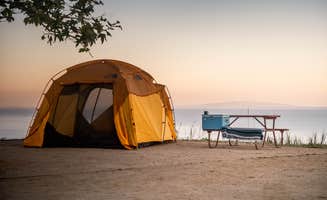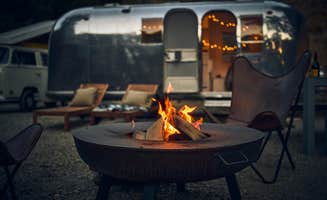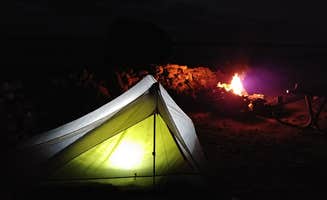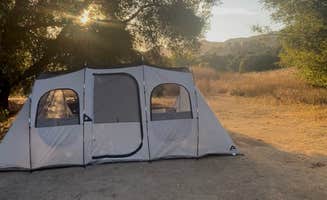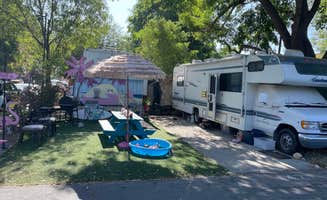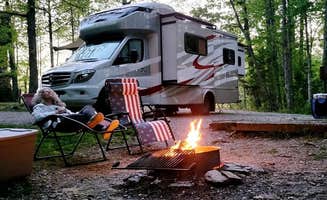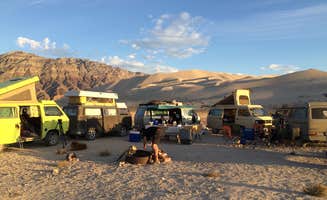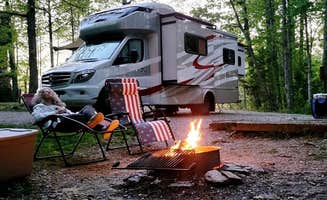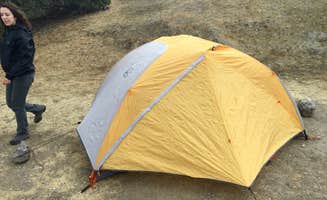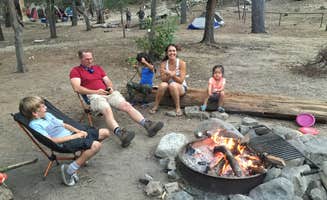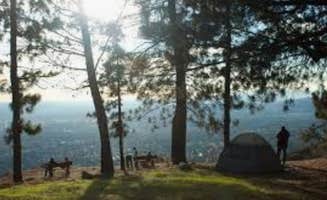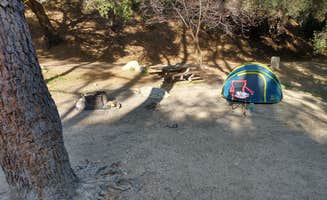Camping options near Torrance, California range from coastal RV sites to state park campgrounds within a 40-mile radius. Most locations require advance reservations, especially during peak summer months when temperatures average 75-85°F. While dispersed camping isn't available in this urban coastal region, established campgrounds offer varying levels of amenities with proximity to both natural features and city attractions.
What to do
Beach exploration: Dockweiler Beach RV Park provides immediate beach access with built-in fire rings along the shore. "We parked right by the Pacific Ocean, watched planes from LAX fly overhead, and soaked in a stunning sunset. It was the ideal place to settle into our campervan life as a Desi-Filipino-Canadian family on a 5000 KM adventure," notes Prince C., who appreciated the dry campsite option further from airport noise.
Kayaking opportunities: Water activities are abundant at several coastal campgrounds. "Had so much fun here today kayaking! It's a great place to enjoy the beach," reports a visitor at Bolsa Chica State Beach, where the protected waters provide calmer conditions for paddlers of all experience levels.
Biking paths: The 20+ mile coastal walking and biking path near Waterfront RV Park connects multiple beach communities. "We rode bikes along the bike path through Huntington, and went for daily walks as well," shares Zach R., who enjoyed the convenience of renting bikes at nearby kiosks for family outings along the paved coastal trail.
What campers like
Ocean proximity: Staying within steps of the Pacific ranks as the top advantage for Leo Carrillo State Park Campground, located 40 miles up the coast from Torrance. "RV Park very close to downtown Long Beach. Nice restroom and laundry facilities. Pool and hot tub are clean," notes Kim M., who appreciated the cleanliness despite busy weekend crowds.
Urban conveniences: Campgrounds in this region provide unusual access to metropolitan amenities. "Nice camp ground with clean and nice facilities," reports Roelof W. about Golden Shore RV Resort, where campers can walk to restaurants and shopping centers while maintaining a home base for regional exploration.
Pool facilities: Anaheim Harbor RV Park offers swimming amenities not typically found at traditional campgrounds. "We spent time in the pool. After that I cooked dinner at our site while my daughters watched television in the adjacent club house. Afterwards they went swimming again," shares Jessica R., highlighting how these urban campgrounds balance outdoor experiences with comfort amenities.
What you should know
Airport noise considerations: Dockweiler Beach campers should prepare for regular aircraft traffic. "We loved this spot next to the beach. We got used to the planes, but they are certainly jarring at first," warns Tyler G., reflecting the trade-off between prime beach location and urban noise patterns.
Reservation requirements: Most campgrounds fill quickly, particularly on weekends and during summer months. Early booking through the California State Parks reservation system or private campground websites is essential, with many locations accepting reservations 6-12 months in advance.
Site configurations: Many coastal campgrounds feature parking lot-style arrangements rather than traditional camping settings. "This is essentially a parking lot with power and water. We had a beach front space with a decent sized palm tree. The only one I really saw," explains Michele H. about Bolsa Chica State Beach Campground, where the convenience of location outweighs the lack of privacy.
Tips for camping with families
Canyon shade options: Malibu Creek State Park Campground offers more natural surroundings than beachfront locations. "The campground is tucked away in a beautiful canyon setting with lots of shade trees, which was really nice for keeping cool. Our site was spacious enough for our two tents and had a good fire pit and picnic table setup," reports a camper who appreciated the cooler environment for children.
Beach access logistics: Bring a wagon for transporting gear between campgrounds and shorelines. "The best part about this campground is definitely the beach access- it's about a 10-minute walk from most sites, and you can explore some amazing tide pools and caves once you get there. The kids loved searching for hermit crabs and sea anemones," shares Alfred at Leo Carrillo State Park.
Food storage precautions: Urban wildlife requires careful handling of provisions. "Spotted a few rats at night, so definitely store your food properly," warns a Leo Carrillo visitor, highlighting the importance of secure containers even at developed campgrounds near populated areas.
Tips from RVers
Site selection strategy: For Dockweiler Beach RV Park, experienced campers recommend specific locations. "Best sites are 125-128," advises PJ M., who found these spots offered better positioning relative to noise sources and ocean views in the dry camping section.
Utility planning: Full hookup availability varies significantly between campgrounds. "Sites next to the beach. Spots are all concrete, very tight so you better be good at backing up your toys. Water and electric only but they do have a dump station," notes Jesse A. about Bolsa Chica, emphasizing the need to plan for limited sewer connections at some locations.
Size considerations: Many coastal campgrounds have tight turning radiuses and compact spaces. "Camping for over 25 years- 140 nights a year and we have never experienced a campground as unprofessional, clueless and arrogant as this one. Their site measurements are for your camping unit ONLY. If you have a tow vehicle or are towing a vehicle you must pay per night for a parking spot," warns Prentice F., highlighting the importance of understanding total length requirements when making reservations.


